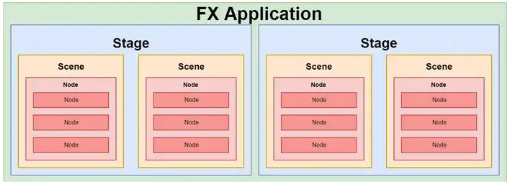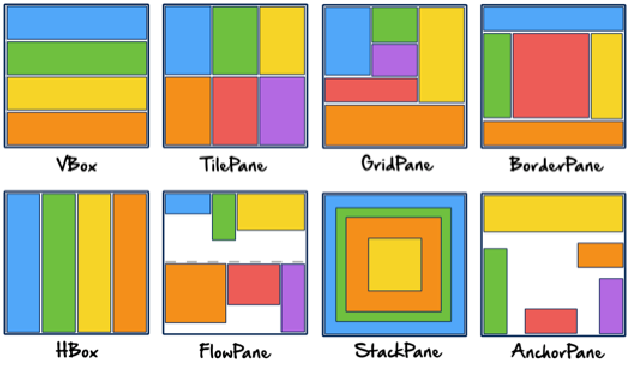14. GUIs
14/11/22
GUIs
GUIs are a form of user interface that allow users to interact with electronic devices through graphical icons as primary notation, instead of text-based user interfaces, typed etc.
Peers GUI guidance
- Keep it simple
- Create consistency and use common elements
- Be purposeful in page layout
- Strategically use colour and texture
- Use typography to create hierarchy and clarity
- Make sure that the system communicates whats happening
- Think about the defaults
Under the hood GUIs are event-driven. The user decides the order of execution depending whether they interact with the program. The system is waiting for something to happen
Java FX
- Can deploy GUIs to table, phone, desktop
- Able to separate GUI code from program code using an XML description file (FXML)
- Supports idea of properties (variables that represent the state of an instantiated object)
- Can use CSS
- Special effects/animations supported
- Comes with media player
Stage and Scene
Stage:
- Think of it as an application windows
- Depending on OS, there may be only one
- Equivalent to Swing's JFrame Scene:
- Equivalent to a content pane
- Holds other objects
Summary:
- If the OS allows each application can have multiple stages - windows. Each stage can switch between multiple scenes. Scenes contain nodes - layout and regular components

Properties & Binding
- JavaFX properties (observable containers) are often used in conjunction with binding, a powerful mechanism for expressing direct relationships between variables
- When objects participate in bindings, changes made to one object will automatically be reflected in another object
- Can also change listeners to be notified when the property value has changed
Lambda Expressions
Short blocks of code which take in parameters and return a value From:
btn.setOnAction(new EventHandler<ActionEvent>() {
@Override
public void handle(ActionEvent event) {
System.out.println("Bye!");
System.exit(0);
}
})
To:
btn.setOnAction(e->{
System.out.println("Bye!");
System.exit(0);
})
Node Class
- Fundamental to JavaFX
- Used to represent controls, layouts, shapes.
- Can apply effects to nodes
Built-in Layout Panes
Vbox: Provides an easy way for arranging a series of nodes in a single rowTilePane: Places all of the nodes in a grid in which each cell, or tile, is the same size. Nodes can be laid out horizontally (in rows) or vertically (in columns)GridPane: Allows to create a flexible grid of rows and columns in which to lay out nodes; nodes can be placed in any cell in the grid and can span cells as neededBorderPane: Provides fine regions in which to place nodes; top, bottom, left, right, and centreHBox: Provides an easy way for arranging a series of nodes in a single columnFlowPane: Nodes are laid out consecutively and wrap at the boundary set for the pane; nodes can flow vertically(in columns) or horizontally (in rows)StackPane: Places all of the nodes within a single stack with each new node added on top of the previousAnchorPane: Allows to anchor nodes to the top, bottom, left side, right side, or centre of the pane; as the window is resized, the nodes maintain their position relative to their anchor point